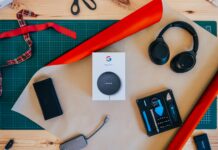
A little more than ten years ago, Samsung’s Galaxy Note was mocked for having a 5.3-inch screen, which was deemed absurdly huge at the time. Steve Jobs, the former CEO of Apple, scoffed at the idea of larger phones and the Galaxy S. (which was smaller than the Note). No one is going to purchase it, he continued, “You can’t get your hand around it.” He was obviously mistaken. Since the turn of the century, we’ve demanded ever-larger phones in order for them to perform more tasks, including video calls, navigation, gaming, and office work. It no longer matters if they can be quickly manipulated with one hand and a quick thumb. Size does, in fact, matter. The iPhone 14 Pro Max I’m holding is large in every way; everything from its screen to its processor to its optics represents a step up for Apple. Most importantly, though, is that it does any duty you decide to give it without quivering.
The largest model in the recently released, four-piece series is the Pro Max. While the iPhone 14 and iPhone 14 Plus are the same size as the Pro and Pro Max, respectively, they have a lower camera spec and chipset, which means they lack some of the more advanced features of their bigger sisters. It simply out-specs the iPhone 14 Pro (which is a little smaller and has a slightly shorter battery life).
It would be simple to recite a list of figures and explain how the iPhone 14 Pro Max stacks up against other phones of a similar size, but in the end, software is what ties everything together and makes a phone come alive, and the new operating system, iOS 16, accomplishes just that. The first of two visible modifications is the “Always On” screen, which comes on when earlier versions would have silently gone to sleep. Instead of a blank screen, you now have a modest, almost matte-looking display that shows the time and date by default as well as a variety of widgets (battery life, weather, stocks, etc.) as extras. It takes some getting used to because we’re so used to unlocking our smartphones to check the lock screen, but soon you’ll love the change. Does it affect the battery life? Yes. The amount? Not enough to cause concern.
The Dynamic Island, which may sound like a cruise ship covers band, is actually Apple’s brilliant technique of turning the top centre of the screen (the cut-out where the front camera and Face ID sensors sit) into a feature rather than a minor inconvenience. This is the second instantly noticeable difference. It now has several active pixels, turning that region into a tiny screen-within-a-screen display. It can display the music you’re listening to, the timer’s status, navigational instructions, and more. Depending on the information being displayed, it changes its size and colour. It virtually makes you forget that a sensor is hidden beneath it. It is a beautiful design element that is only available for the Pro and Pro Max. Apple has opted this time to increase the Pro Max’s main camera from 12 to 48 megapixels, paired with a 12-megapixel ultrawide and a 12-megapixel telephoto with 3x zoom, as the major smartphone makers all move towards basically comparable designs (the latter is absent from the iPhone 14 and 14 Plus.) Hello, sharper selfies! The 12-megapixel front-facing camera now has autofocus, and the all-seeing optics’ underlying software has also seen significant advancements. Both the telescopic and main cameras benefit from a “photonic engine,” and the latter can now shoot 48-megapixel proRAW photographs with an astounding amount of information. Additionally dangling enticingly before Pro users is the option to shoot in cinematic mode at 4K quality and movie-standard 24 frames per second. Then there is the new Action Mode in iOS 16, which gives all iPhone 14 models gimbal-style steadiness when capturing videos. Simply film yourself rushing up the stairs, and the video will appear to show you virtually flying up. All are made possible by devilishly cunning software.
While this didn’t prove to be very helpful during testing in the grey gloom of autumnal Britain, anyone wanting to watch Jaws while lounging on Bondi Beach will appreciate it. Apple claims that the Pro Max’s display is the most advanced ever featured in a smartphone. It has an outdoor peak brightness of a dazzling 2,000 nits. Naturally, that display is large. Although it is not any bigger than the 13 Pro Max, it is still a sizable 6.7in. (That is 20% larger than the 2011 Galaxy Note, which was formerly thought to be absurdly enormous.)
It’s amazing how quickly a device I once thought was a little hefty starts to feel, well, just the right size. I personally prefer smaller phones and would choose a little model over a Max. The sleek, reliable body, gorgeous screen, and sophisticated software of the iPhone 14 Pro Max make handling it a pleasure. Returning to the 5.4 displays in my pocket makes me feel like I’ve been demoted to uncomfortable economy class.














































